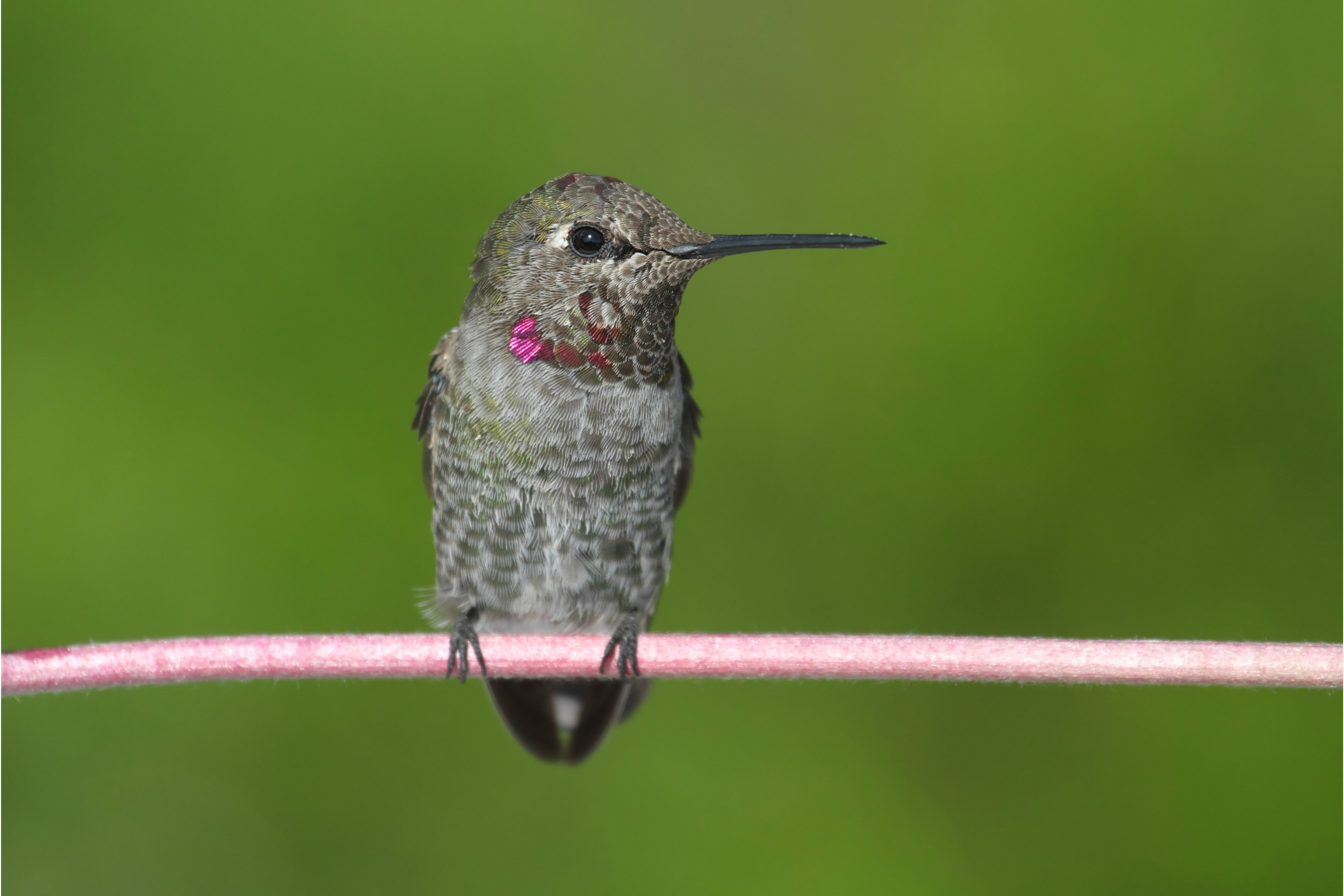Anna's hummingbird
(Calypte anna)

Description
Calypte anna, commonly known as Anna’s Hummingbird, is a species of hummingbird found along the western coast of North America. These birds are known for their vibrant colors, acrobatic flight patterns, and unique mating rituals. In this article, we will take a closer look at the characteristics, behavior, habitat, and conservation of Anna’s Hummingbird. Taxonomy and Classification Anna's Hummingbird belongs to the family Trochilidae, which includes over 300 species of hummingbirds. The scientific name for Anna's Hummingbird is Calypte anna. The genus Calypte comprises only one species, Calypte anna. Physical Characteristics Anna’s Hummingbirds are small birds, measuring around 4 inches (10 cm) in length and weighing around 0.14 ounces (4 grams). The males have iridescent green feathers on their backs and crowns, while their throats and chests are a bright rose-pink color. Females have greenish-gray feathers on their backs and pale grayish-white feathers on their undersides. Behavior Anna's Hummingbirds are known for their acrobatic flight patterns. They can fly forward, backward, hover, and even fly upside down. They have a unique mating ritual that involves the male diving at high speed towards the female while making a buzzing sound with their tail feathers. This sound is created by the air flowing over their tail feathers as they change direction during their dive. Habitat Anna's Hummingbirds are found along the western coast of North America, from southern Alaska to Baja California. They are commonly found in urban and suburban areas, as well as coastal scrub and chaparral habitats. They can also be found in oak woodlands, gardens, and parks. Diet Anna's Hummingbirds feed on nectar from flowers, as well as insects and spiders. They are also known to feed on tree sap, especially during the winter months when there are fewer flowers available. Reproduction Anna's Hummingbirds breed throughout the year, although breeding is more common during the spring and summer months. The male performs an elaborate courtship display to attract a female, which includes the high-speed dive described earlier. Once the female has been courted, she will build a small cup-shaped nest out of plant fibers, spider silk, and other materials. Conservation Anna's Hummingbirds are not considered endangered, but their populations have declined in some areas due to habitat loss and degradation. Conservation efforts include the protection of their habitats, the restoration of degraded habitats, and the promotion of native plants that provide nectar for the birds. In addition, individuals can help by providing hummingbird feeders with a solution made from one part sugar to four parts water. It is important to note that hummingbird feeders should be cleaned and refilled regularly to prevent the growth of harmful bacteria. Conclusion Anna’s Hummingbird is a small, yet fascinating bird that is well-known for its acrobatic flight patterns and unique mating ritual. Their populations have declined in some areas due to habitat loss and degradation, but conservation efforts are underway to protect and restore their habitats. By understanding the characteristics and behavior of this species, we can appreciate the importance of conserving and protecting them for future generations to enjoy.
Taxonomic tree:







